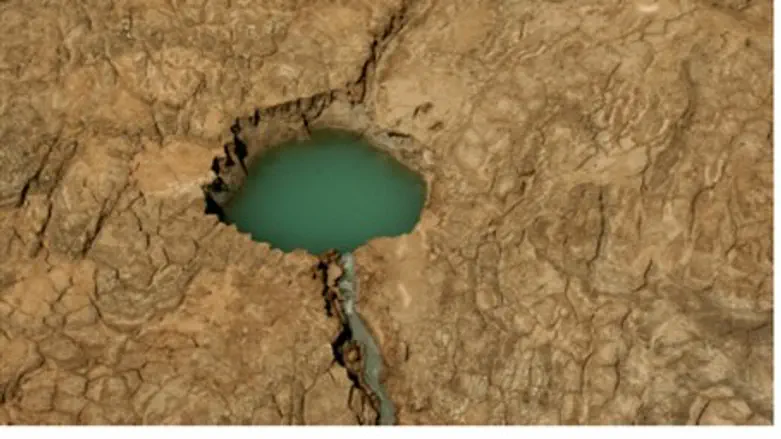
One of the most spectacular natural landscapes in the world, the Dead Sea is the world’s largest day spa, where people from all over the world throughout history have traveled to bask in its natural pure waters and mud, renowned for their legendary curative and therapeutic powers. In fact, the Dead Sea was actually recently nominated to be the 8th wonder of the World.
This unique creation for centuries has been fed by the Jordan River, with no outflow. Combined with high temperatures and low humidity, approximately seven million tons of water evaporates from the Dead Sea daily! This exceptionally high rate of evaporation leaves behind the world's richest source of natural salts and minerals, which are well known for relieving pains and sufferings caused by arthritis, eczema, psoriasis rheumatism, headache and foot-ache, while softening and nourishing the skin, all of which has created a multi-million dollar Dead Sea cosmetics industry.
Today, however, for all its majestic beauty and legendary healing powers, the Dead Sea is dying a slow death, its surface area shrinking by 30% the past twenty years. Why? Quite simply, for years agricultural industries in Israel and Jordan have been diverting water from the Jordan River for their own needs. This, along with the dumping of sewage by these countries and the Palestinian Authority, has turned the Jordan River to a slow, muddy polluted flow that doesn’t even reach the Dead Sea anymore during the summer months.
In addition, companies like Dead Sea Works are removing water from the sea at a rate of about 150 million cubic meters per year to access the lucrative minerals beneath the water. The minerals are used to produce chemical products for export, especially potash, which can be used to make glass, soap and fertilizer. For some perspective, at the time of Israel’s founding in 1948, about 1.4 billion cubic meters of water per year flowed into the Dead Sea. That total has shrunk to 100 million cubic meters!
The consequences of the sea's retreating groundwater have been devastating. As salt deposits that had supported a surface layer of sand are washed away, thousands of dangerous sinkholes have been left in their wake, which have destroyed beaches, nature reserves and agricultural fields in the area. Route 90, the Israeli highway that runs north-south along the Dead Sea’s western shore, has had to be re-routed several times because of sinkholes opening up in its path.
Today, two main ideas have been considered for saving the Dead Sea. The first is quite simple: to restore flow to the sea from the Jordan River. While steps have been taken, such as treating and re-using sewage around the lower Jordan and reducing withdrawals, it has not been enough to significantly reduce the usage of Jordan River water itself for agricultural and domestic needs. Given the scarcity of alternative water sources in the area, this reality seems unlikely to change anytime soon.
The other idea is the controversial Red-Dead project, a joint operation between Israel, Jordan and the PA to build a series of pipelines, canals, tunnels, and desalination plants that would bring water about 180 kilometers (112 miles) from the Red Sea, near the southern Israeli city of Eilat, to the Dead Sea.
While it seems like a worthy endeavor, environmental assessments warn of the unknown risks of mixing the waters of the two seas, including “changes to the appearance and water quality” of the Dead Sea, as well as damage to the region’s overall ecology, leading both the Environmental Protection Ministry and Friends of the Earth Middle East to both vehemently oppose the plan. In addition, some critics contend that the whole idea of the Red-Dead project is merely a pretext to transport water from the Red Sea hundreds of miles north to Amman, the Jordanian capital, which is facing a serious water shortage.
Despite these concerns, with billions of tourist dollars potentially lost by a continued decline in water levels, it looks as if Israel is going forward with it. Last month Regional Cooperation Minister Silvan Shalom signed off on a pact with representatives from the PA and Jordan to green-light the beginning of the construction of the estimated $10 billion project.
According to the agreement, approximately 100 million cubic meters of water per year will be carried northwards to help replenish the Dead Sea. The Jordanians will receive 30 million cubes for their own southern region and an additional 50 million cubes of grey-water from the Kinneret for the north. Meanwhile, the Palestinian Authority will receive approximately 30 million cubic meters from the Kinneret – either desalinated water or grey-water at production cost – which will increase water supplies for Judea and Samaria residents.